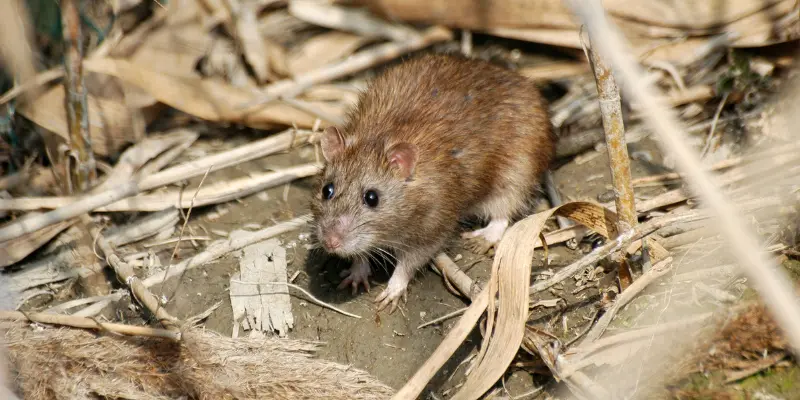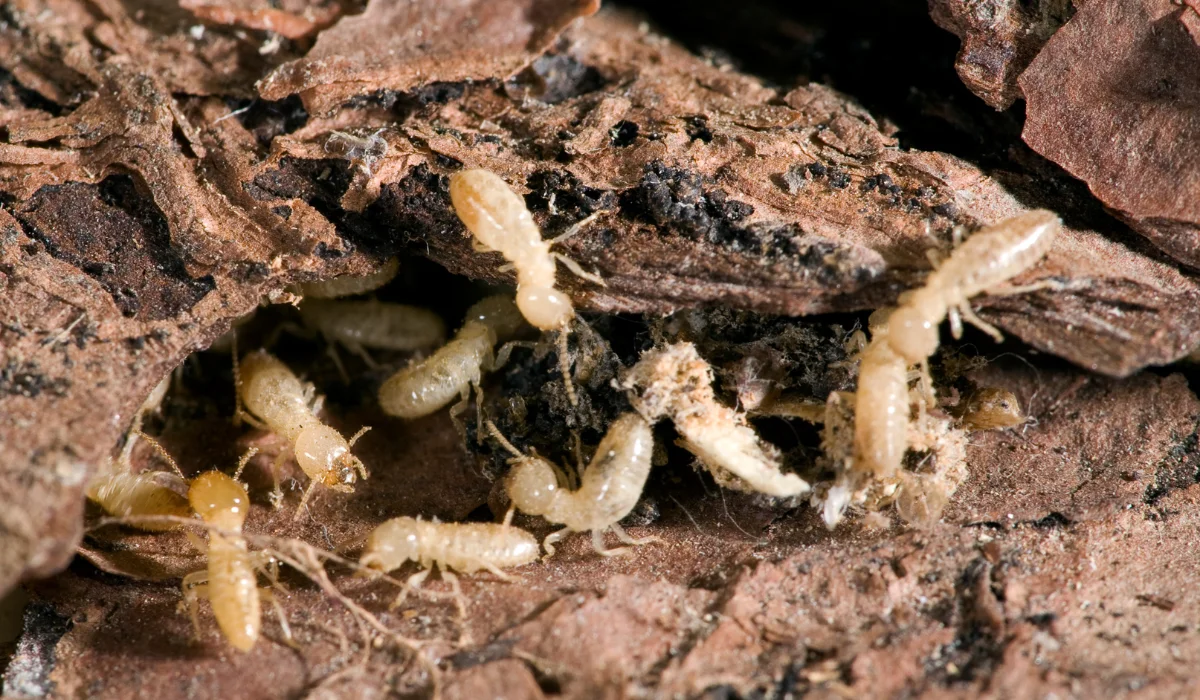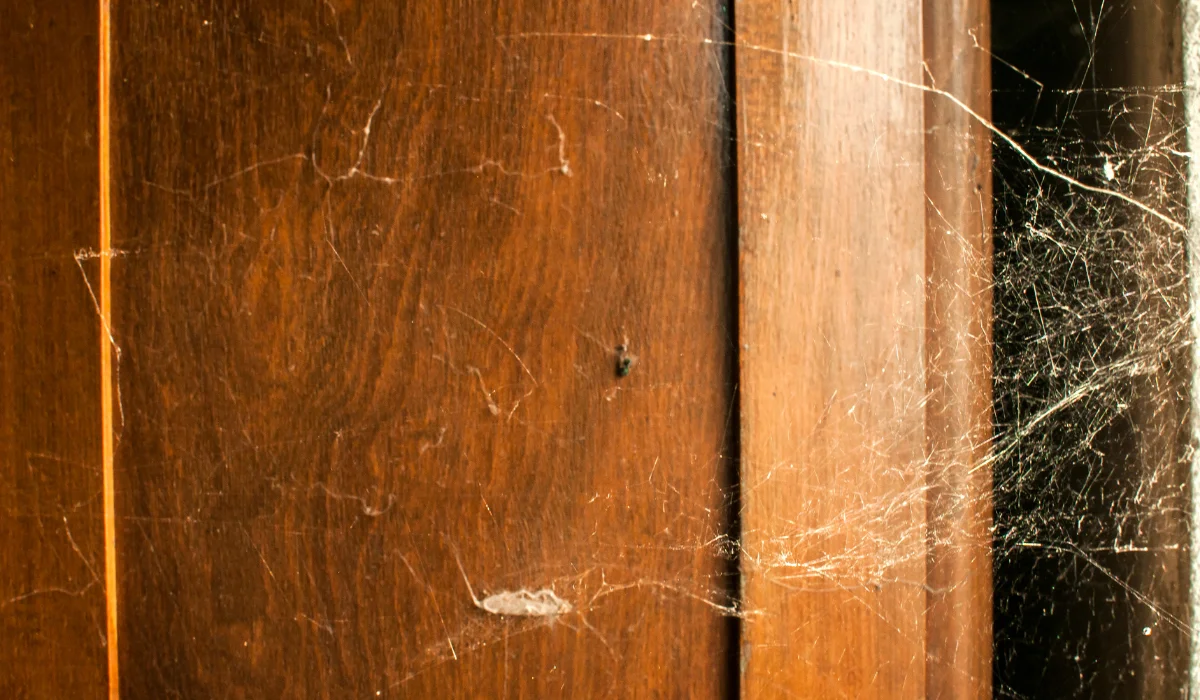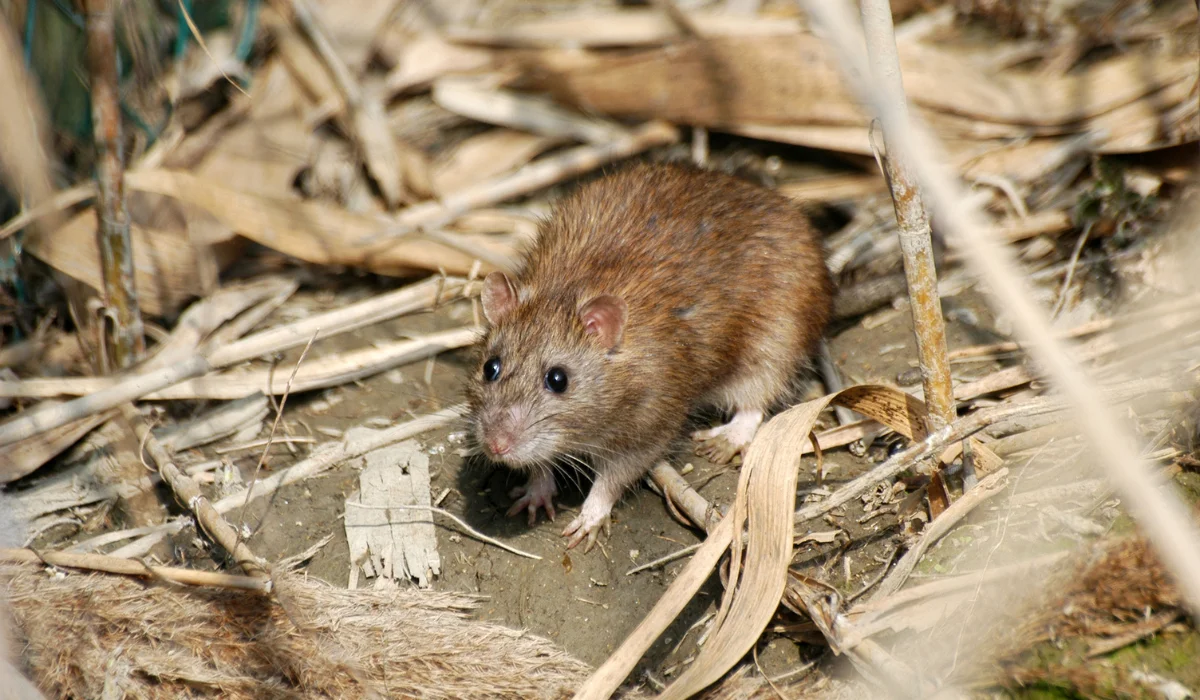Norway rats, aka Rattus norvegicus, are city slickers found worldwide.
These adaptable rodents love living near humans, from sewers to attics, causing damage and spreading diseases. But, they’re not just pests; they have complex social lives too.
Curious about managing these uninvited guests? Stick with us for the essentials on spotting, stopping, and saying goodbye to Norway rats.
Key Takeaways
- The Norway rat, also known as Rattus norvegicus, is a versatile and common rodent in Louisiana.
- They pose significant health risks as vectors for diseases like the Bubonic Plague and Leptospirosis, requiring effective rodent control and sanitation measures.
- Eliminating Norway rat infestations involves securing food sources, limiting access to nesting materials, sealing entry points, and possibly using rodenticides.
- Professional pest control is the best option to eliminate these rodents in severe cases and when DIY control methods fail.
UNDERSTANDING THE NORWAY RAT
In Louisiana, the Norway rats are a prevalent and adaptive rodent species. They are known by many names and play a notable role in various human habitats.
Overview of the Norway Rat
The Norway Rat, also known as the Norwegian rat or by its scientific name Rattus norvegicus, is a widely recognizable rodent known for its many names, such as:
- Hanover rat
- Brown rat
- European rat
- Sewer rat
- Common rat
It is prevalent in regions like Louisiana, where it can significantly impact local ecosystems and human infrastructure.
Distinguishing Features
The Norway rat is easily distinguishable by its robust body, coarse fur, usually in shades of brown, and shorter tail. Here’s how it compares to other rat species.
| Feature | Description of Norway Rat | Comparison to Similar Species |
| Fur Color | Brown with scattered black hairs | Black rat (Rattus rattus) has uniformly black fur |
| Tail Length | Shorter than the body, semi-naked appearance | Black rat has a longer, more uniform tail covering |
| Ears | Small and can barely cover the eyes if pulled down | Australian water rats have more prominent, more noticeable ears |
| Size | Larger and bulkier than most other Muridae family members | Black rat and wharf rat are smaller and lighter |
Life Cycle and Lifespan
Norway rats give birth to multiple litters annually, and they are notorious for hosting fleas, which have been associated with the spread of various diseases.
They exhibit sexual maturity within 2 to 5 months of birth, and their lifespans vary. However, they typically live up to a year or two in wild conditions.
Size and Senses
The Norway rats have a keen sense of smell, which is crucial for survival. It helps them locate food, avoid predators, and communicate with one another.
| Aspect | Norway Rat | Comparison |
| Body Length | 16 to 20 cm (6.3 to 7.9 inches) | Similar to a teapot |
| Weight | 350 to 500 grams (12.3 to 17.6 ounces) | Weighs about as much as a baseball |
| Sense of Smell | Highly developed | Superior to humans, it aids in foraging and detecting predators |
NORWAY RAT HABITAT AND DIET
Norway rats are notorious for their high adaptability. They thrive in both cluttered urban environments and quieter rural settings.
They profoundly impact ecosystems and human habitats, specifically when they make their nests in sewers and basements.
Where Do Norway Rats Live?
The presence of these rodents signifies a robust and highly opportunistic species that has successfully spread from its origins in Northern China to other parts of the world. It includes:
- North America
- Europe
- Asia
Their home range is typically close to a steady food source. It can vary widely depending on the area’s attraction factor.
| Area | Attraction Factor |
| Urban Areas | – High population density. – Abundant waste and refuse as food sources. |
| Rural Areas | – Access to natural food sources along river banks. – Availability of crops in fields due to human agriculture. |
The Norway Rat Diet
Norway rats are omnivores, not picky eaters. Their dietary flexibility allows them to forage for a wide variety of foods.
They can disturb homes and businesses by targeting readily available food stores.
What Attracts Norway Rats?
As homeowners, you should be aware of these attractants to prevent Norway rat infestations better and protect their living spaces.
- Leftover food or poorly stored pantry items
- Unsecured trash bins
- Pet food bowls or leftover pet food
NORWAY RAT HEALTH RISKS
Norway rats play a critical role in epidemiology because they are vectors for several diseases that affect humans.
Public health authorities like the Centers for Disease Control and Prevention (CDC) provide information on rodent-borne diseases. Here are the common ones.
| Disease or Pathogen | Transmission Method |
| Bubonic Plague (Yersinia pestis) | Flea bites from infected rats |
| Leptospirosis | Contact with contaminated water |
| Hantavirus | Inhalation of dust with rat urine/feces |
| Rat-Bite Fever | Bites or scratches from rats |
You must implement effective rodent control strategies and maintain proper sanitation to lower the risk of contracting diseases from Norway rats.
SIGNS OF NORWAY RAT INFESTATION
You can identify a Norway rat infestation in Louisiana through various signs. These rodents are notorious for entering homes in search of food and shelter.
Here’s a closer look at common indicators of their presence:
| Sign | Description |
| Droppings | They leave about 0.5-0.75 inches long pellet-shaped droppings. |
| Gnaw Marks | Their strong jaws leave visible chewing damage on food packaging, wood, or cables. |
| Grease Marks | Oily fur leaves dark grease marks along walls and baseboards as they follow the same paths. |
| Unusual Noises | Scratching sounds or other vocalizations in walls or ceilings, especially at night, indicate they’re active. |
| Nests | They build nests from shredded materials like fabric or paper, usually hidden in dark locations. |
| Trail Tracks | Runways of footprints or tail marks may be visible in dusty environments or when using tracking powder. |
| Live or Dead Rats | Sightings of live or dead rats during the day can point to a large infestation. |
| Pet Behavior | Pets may become excited or agitated if they detect Norway rats nearby. |
| Odd Smells | A musty odor may permeate the area, generally from their urine. |
HOW TO GET RID OF NORWAY RATS
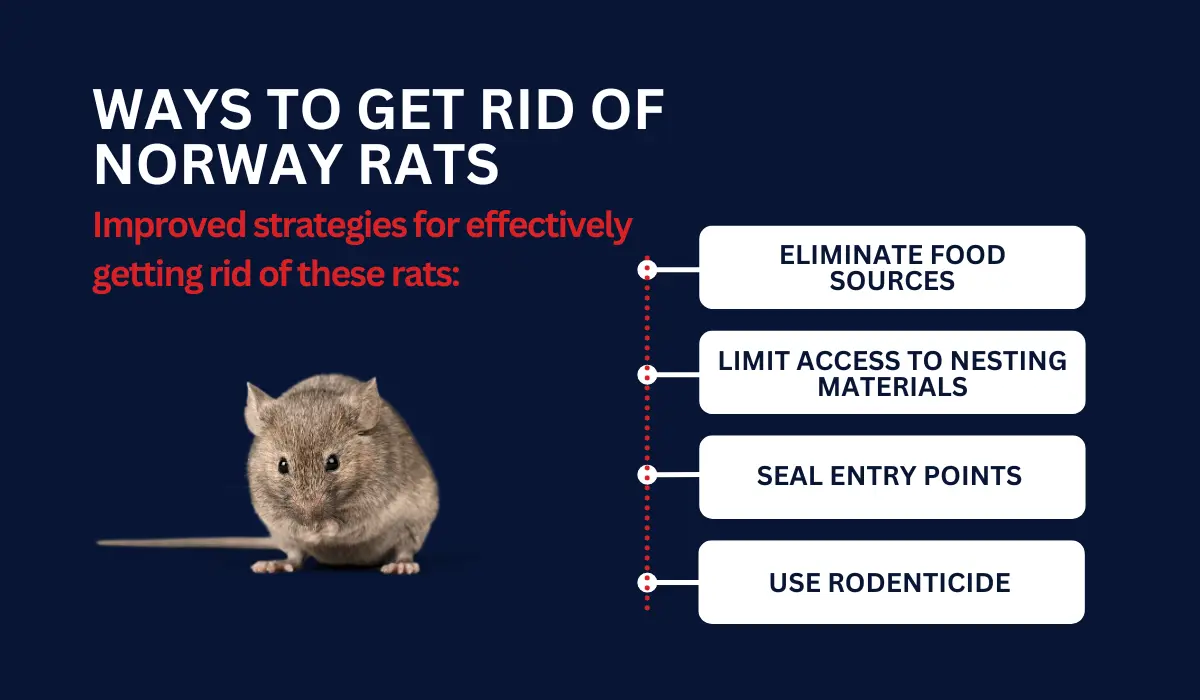
Eliminating Norway rats involves a multi-faceted approach. Here are improved strategies for effectively getting rid of these rats:
Eliminate Food Sources
To prevent future infestations, it’s crucial to cut off the Norway rats’ food supply:
- Secure Food Storage: Store all human food in sturdy, sealed containers. Rats can easily chew through weak materials, so opt for metal or thick plastic bins.
- Pet Food Management: Do not leave pet food out overnight. Store uneaten pet food properly and clean feeding areas regularly.
- Prompt Cleanup: Address spills and crumbs immediately. Regularly address and dispose of dead animals that may attract them.
Limit Access to Nesting Materials
Norway rats look for comfortable materials to build their nests:
- Vegetation Control: Trim tree branches and bushes to maintain at least a 3-foot clearance from your home’s foundation.
- Secure Storage for Fabrics: Use durable, heavy-duty storage bins to prevent rats from accessing nesting materials.
- Proper Disposal: Dispose of cardboard and other chewable materials promptly. Opt for recycling or secure disposal methods to minimize attraction.
Seal Entry Points
Securing your home against Norway rats requires careful attention to potential entry points:
- Comprehensive Inspection: Thoroughly inspect your home for any cracks, holes, or gaps that rats could use to enter.
- Use Durable Materials for Sealing: Seal all identified entry points with materials rats cannot chew through. Caulk smaller gaps to ensure a tight seal.
- Trap Placement: After securing your home, strategically place live or snap traps around potential entry points or high-activity areas.
Use Rodenticide (Be Careful!)
While physical barriers and sanitation are critical first steps, rodenticides can be a potent addition to your pest control arsenal:
- Safe Placement: If you use rodenticide, ensure it is placed in tamper-resistant bait stations to prevent non-target animals and children from accessing it.
- Selecting the Right Formula: Consult a pest control professional to determine the most effective and appropriate type for your situation.
NORWAY RAT CONTROL METHODS
As American residents who notice signs of rat activity, you should consider taking action to control the rat population.
Effective control of Norway rats involves a strategic and multi-faceted approach to rat control and pest management.
DIY vs. Professional Pest Control
When facing a Norway rat infestation in Louisiana, you can choose DIY pest control methods or hire professional pest control services.
Each approach has its own set of advantages and disadvantages.
| Aspect | DIY Pest Control | Professional Pest Control |
| Cost | Generally less expensive in the short term. | Cost-effective in the long run. |
| Expertise | Limited to the knowledge of the individual. | They have specialized training and knowledge. |
| Time and Effort | Can be time-consuming and require ongoing effort. | Saves time as professionals handle the process. |
| Risk | Higher risk of improper handling of poisons or traps. | Lower risk due to proper training in handling hazardous materials. |
| Effectiveness | Varied effectiveness, depending on the individual’s skill. | Generally more effective due to advanced techniques. |
| Long-term Solutions | May not address the root cause of the infestation. | It includes a comprehensive plan to prevent re-infestations. |
SHOULD YOU CALL THE RAT EXPERTS?
When Norway rats become unwelcome tenants in your home, consider seeking the pest control professional’s help.
Here are several considerations to determine if professional intervention is needed:
- Signs of a severe infestation warrant a call to the pros.
- Persistent pests suggest it’s time for expert strategies.
- Professionals know how to handle risks safely and effectively.
- Experts should step in if handling rodents is outside one’s comfort zone.
Wherever you’re in Louisiana, seeking expert help should be easy. For immediate intervention for a severe infestation, let Lajaunie’s rat control specialists tailor a solution that’s right for your home.
For more information about the areas we service, visit our location page.
 By: LaJaunie's Pest Control
By: LaJaunie's Pest Control 